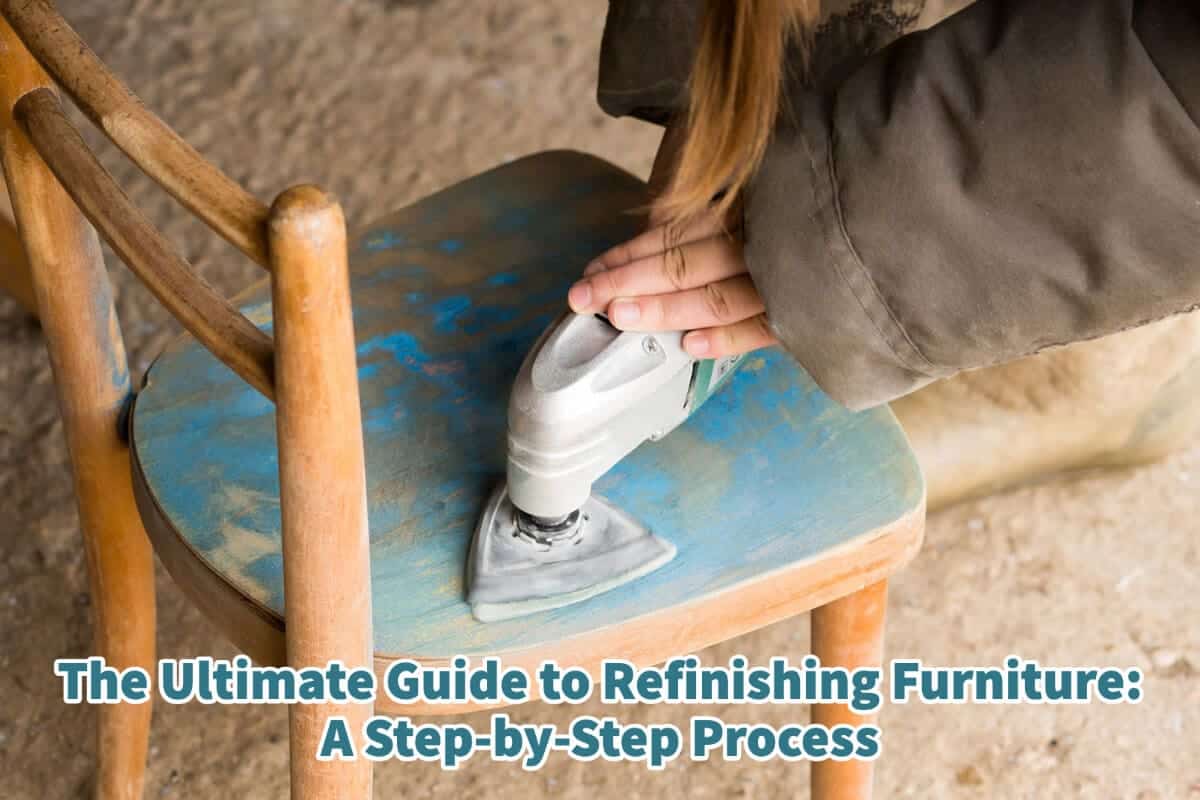Breathing new life into a worn-out piece of furniture can be incredibly rewarding. Refinishing can transform a mundane item into a stunning centerpiece for your home, whether an old family heirloom or a thrift store find.
Refinishing furniture involves more than just a paintbrush and a can of paint. It requires patience, precision, and a solid understanding of the steps involved. In this comprehensive guide, Our ultimate guide to refinishing furniture is an 8-step process that outlines all the steps you need to refinish furniture.
Table of Contents
- 8-Step Process To Refinishing Furniture – Our Ultimate Guide
- 10 Ways Refinishing Furniture Can Be a Great Project
- Related Content
8-Step Process To Refinishing Furniture – Our Ultimate Guide
Furniture refinishing is a detailed process requiring much hard work and dedication. In this comprehensive guide, we’ll walk you through the steps involved in refinishing a piece of furniture, providing you with all the knowledge needed to embark on this rewarding DIY project.
Evaluate If Furniture Is Worth Refinishing
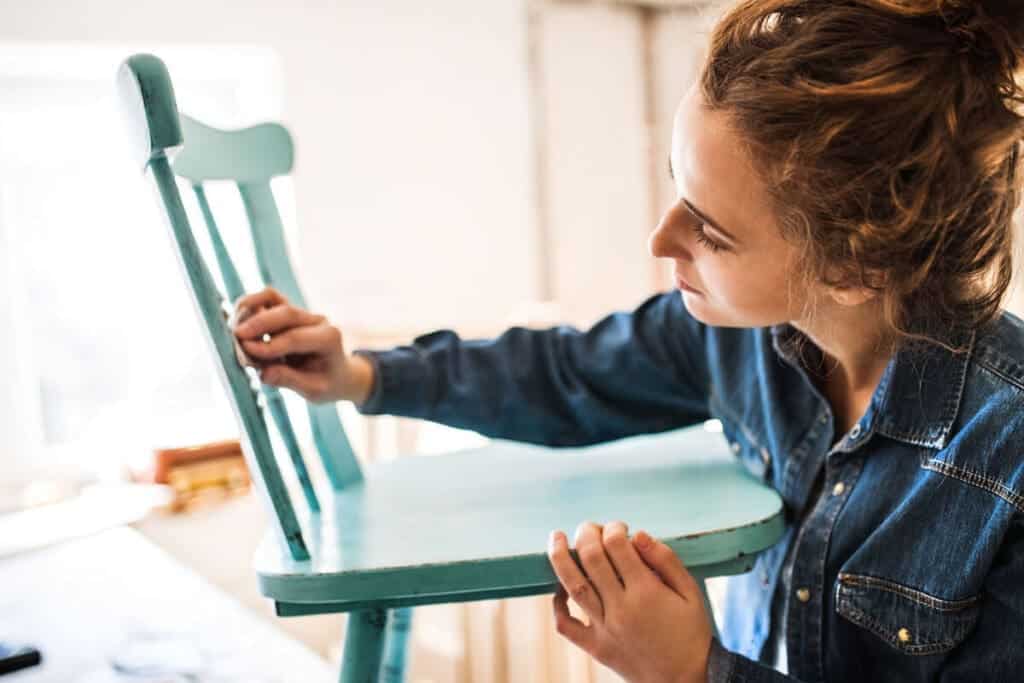
Before you even pick up a sanding block, take some time to thoroughly evaluate the piece of furniture you’re planning to refinish. Inspect it for any damages or defects, and ensure it’s worth investing your time and effort. It’s essential to assess whether refinishing would enhance the piece’s aesthetic and functional value or detract from its original charm.
To discover if a piece is worth evaluating, read our blog, Art Of Refinishing: Determine If Wood Furniture Is Worth It by clicking here.
Prepare Your Furniture For Refinishing
Once you’ve decided to proceed, prepare your workspace. Choose a well-ventilated area, preferably with plenty of natural light.
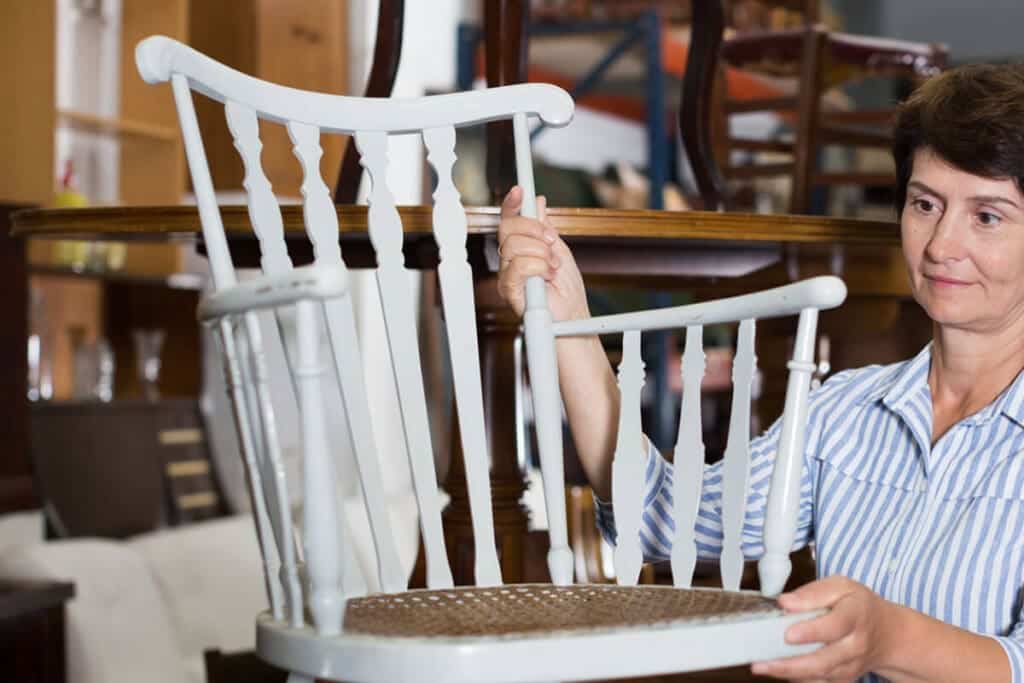
Gather your tools and materials: sandpaper, primer, paint or stain, sealant, brushes, safety goggles, and gloves. Cover the floor with a drop cloth to protect it from dust and spills.
Strip Down Your Furniture
Start by removing any hardware, such as knobs or handles. Then begin the stripping process.
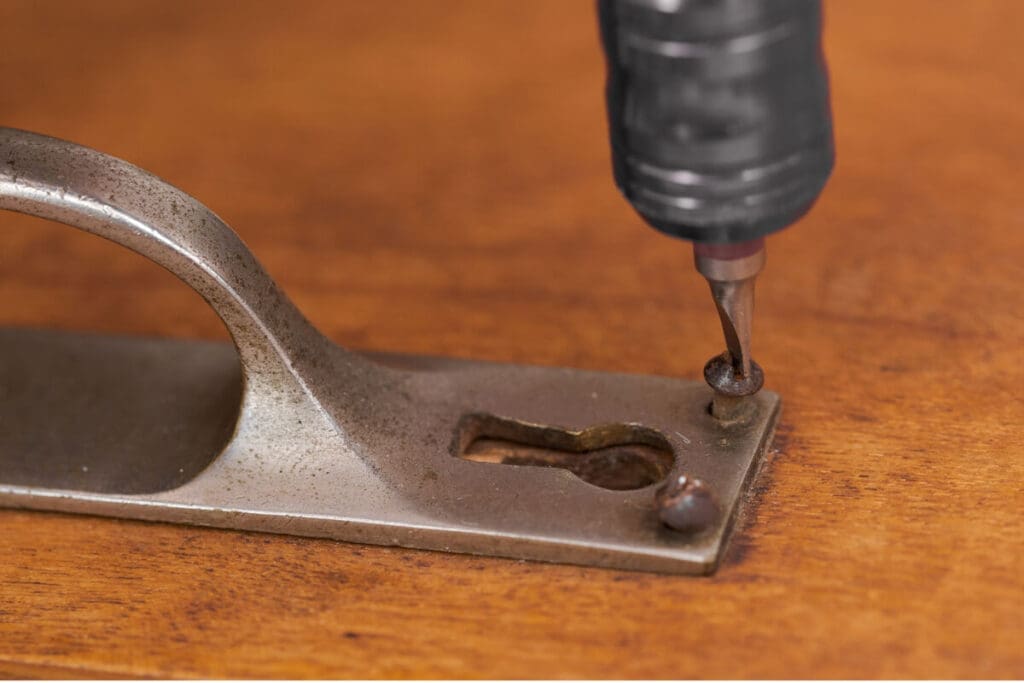
Apply a thick layer of chemical stripper to the surface of your furniture and let it sit for the time specified on the product label. Once the old finish bubbles, scrape it off gently with a plastic scraper.
Remember to use gloves and safety goggles during this process.
Start The Sanding Process
Sanding is the next step. Start with coarse-grit sandpaper to remove any old finish and smooth out imperfections.
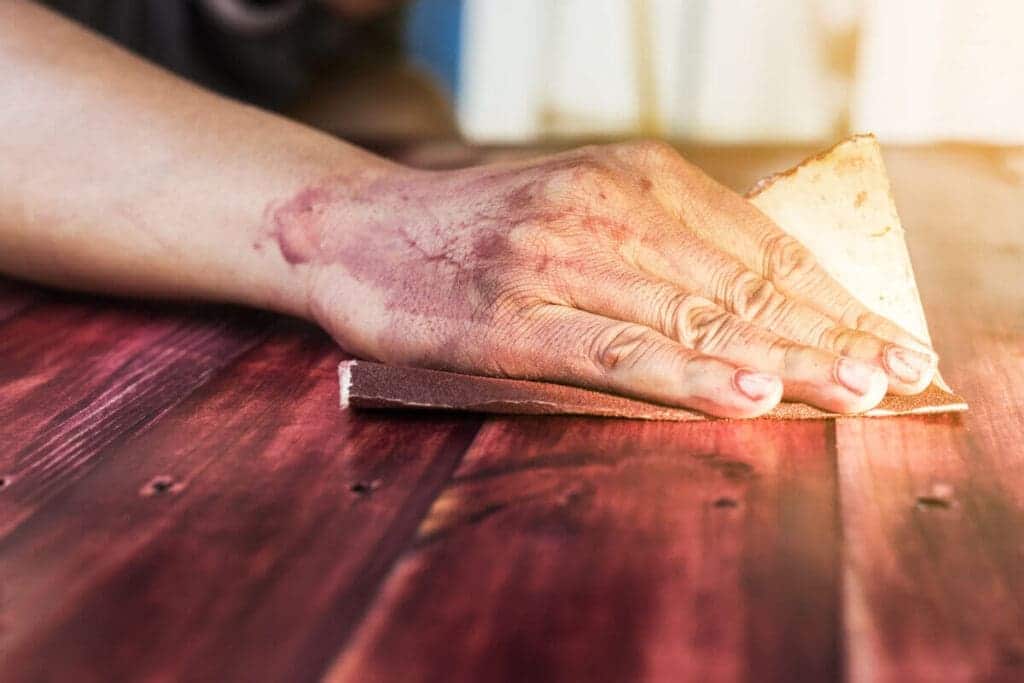
Then, switch to a medium-grit paper to further smooth the surface. Finally, use fine-grit sandpaper for a perfectly smooth finish.
Always sand in the direction of the wood grain to avoid scratches and irregularities.
Inspect And Repair The Furniture
Inspect the piece again for any damage or defects that need repairing. Fill any holes or cracks with wood filler, and let it dry.
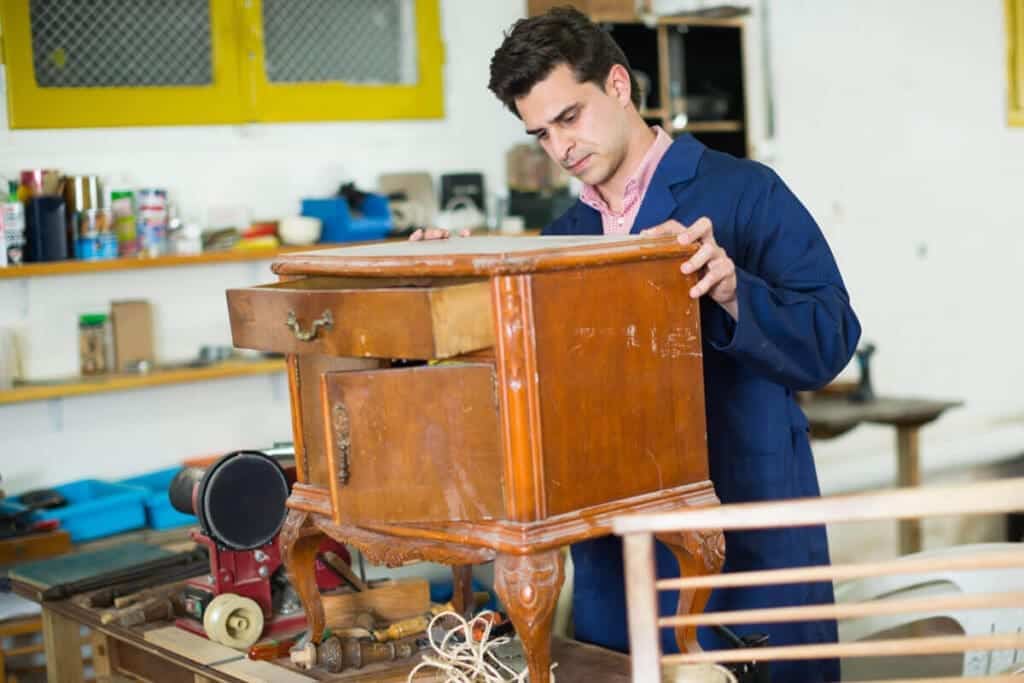
Once it’s dry, sand the repaired areas until they align with the rest of the surface.
Prime The Furniture Piece
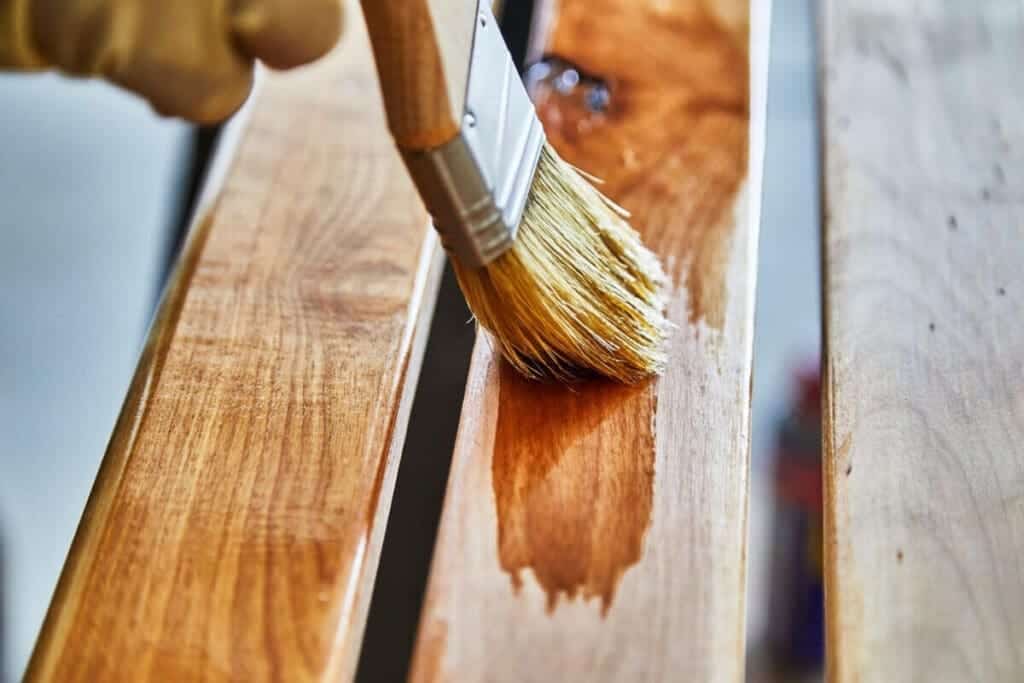
Priming prepares the surface for the new finish, ensuring even application and longevity. Apply a coat of primer with a brush, starting from the top and working your way down to prevent drips. Let it dry completely before moving on to the next step.
Painting Or Staining Of The Furniture
Now comes the fun part: adding color or enhancing the wood’s natural beauty with a stain. If you paint, apply thin, even coats, letting each dry before adding the next coat of paint or finish.
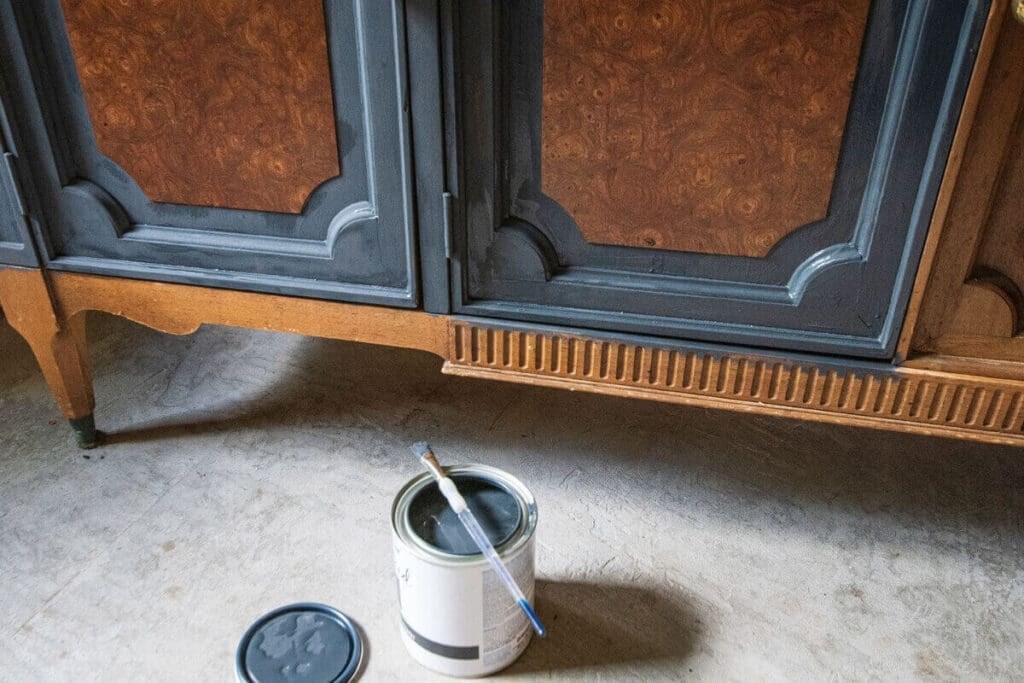
If you’re staining, apply the stain with a brush or rag, working in the direction of the grain. Let the stain sit for a few minutes, then wipe off the excess with a clean rag.
Seal The Furniture Piece
The final step in the refinishing process is applying a sealant. This protective coat will preserve your hard work and give the piece a finished look.
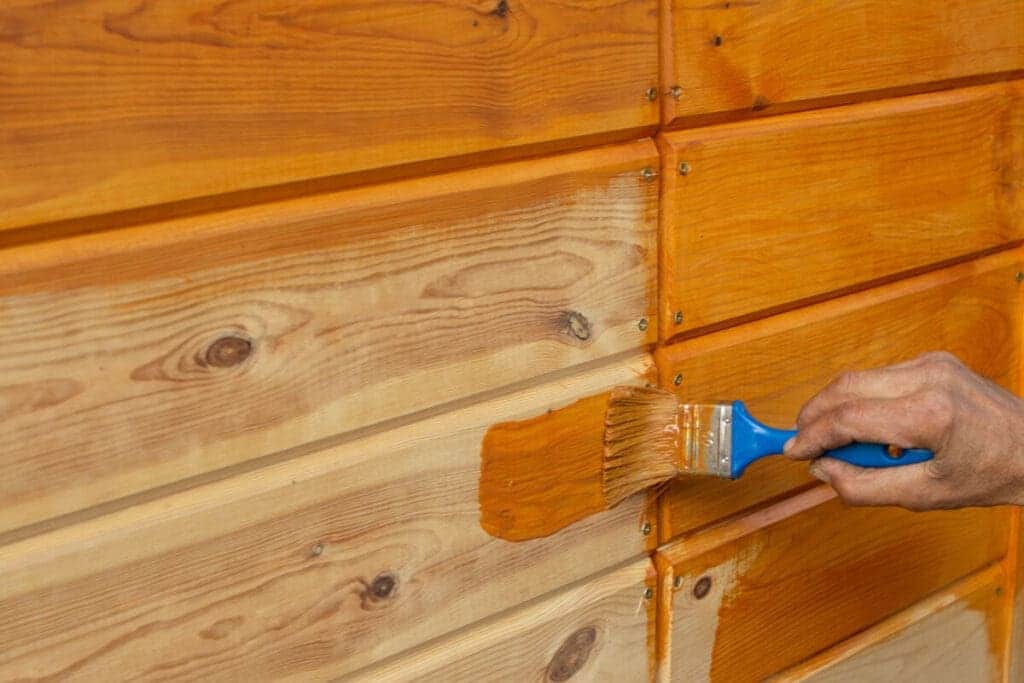
Depending on the look you’re going for, you can choose from various finishes, such as matte, satin, semi-gloss, or gloss. If you want the piece not to look shiny, we recommend you use a matte or satin top coat sealant.
Refinishing a piece of furniture is a journey that requires time, effort, and attention to detail. But the resulting transformation makes all the hard work worthwhile with this guide.
Our Ultimate Guide to Refinishing Furniture is a step-by-step process; this process should give you a roadmap to guide you through each step, demystifying the art of refinishing.
So, roll up your sleeves and prepare to discover the incredible potential that lies within an old piece of furniture. After all, every piece has a story to tell, and with your help, it could be a tale of spectacular transformation.
10 Ways Refinishing Furniture Can Be a Great Project
Refinishing furniture has always been a passion of mine, and let me tell you, it’s not just a hobby—it’s a rewarding journey that offers countless benefits.
Here are ten reasons why diving into furniture refinishing projects can be an excellent idea:
1. Personal Expression:
Refinishing allows me to express my creativity and style by choosing colors, finishes, and designs that resonate with me and my home decor.
2. Cost-Effective Makeovers:
Refinishing old or thrifted furniture is a budget-friendly way to transform pieces that would otherwise be costly to replace.
3. Sustainability Matters:
Restoring furniture extends its lifespan, reducing the need for new production and contributing to a more sustainable lifestyle.
4. Unique Customization:
I love that I can create one-of-a-kind pieces tailored to my taste, ensuring my furniture stands out as a unique statement.
5. Learning Opportunity:
Refinishing is a continuous learning experience, teaching me new skills in woodworking, painting, and restoration techniques.
6. Emotional Attachment:
Breathing new life into an old family heirloom or a cherished find creates a deeper emotional connection to the piece.
7. Therapeutic and Relaxing:
Sanding, painting, and working on furniture projects can be surprisingly therapeutic, providing a satisfying sense of accomplishment.
8. Valuable Skills:
Refinishing furniture equips me with practical skills that are not only valuable for my own projects but can also be shared with friends and family.
9. Small Business Potential:
For me, refinishing started as a hobby, but it has the potential to turn into a small business venture, selling beautifully restored pieces.
10. Eco-Friendly Endeavor:
By refinishing instead of discarding, I actively participate in reducing waste and minimizing the environmental impact of furniture disposal.
Refinishing furniture has become much more than a pastime for me; it’s a fulfilling journey that allows me to exercise my creativity, save money, contribute to sustainability efforts, and, above all, enjoy the process of transforming pieces that surround me into something truly special.
Find out more about how Mondoro can help you create, develop, and manufacture excellent home decor and furniture products – don’t hesitate to contact me, Anita. Check out my email by clicking here or become a part of our community and join our newsletter by clicking here.
Mondoro gives out a FREE Lookbook to anyone interested. You can receive a copy of our latest Lookbook by clicking here.
Listen to our Podcast called Global Trade Gal. You can find it on all major podcast platforms. Try out listening to one of our podcasts by clicking here.
Subscribe to our Mondoro Company Limited YouTube Channel with great videos and information by clicking here.
Related Content
Is Real Wood Furniture Worth The Extra Cost?
Real wood furniture costs can vary due to the types of solid wood being used and the grade of the wood. Not all real wood furniture is worth the extra cost, especially if the wood they use is substandard and poorly constructed.
You can discover more by reading Is Real Wood Furniture Worth The Extra Cost? by clicking here.
What Color Is Expresso Furniture?
The Expresso color in furniture is a black-brown color with some red and gold highlights showing through the color. The expresso color furniture can look more like indirect brown light and more like black in a dimly lit room.
You can discover more by reading What Color Is Expresso Furniture? by clicking here.
Is Horsehair Used In Upholstery?
Horsehair is found today in mainly antique furniture that has been restored. You can still purchase horsehair or horse and hog hair to upholstery your antique furniture piece. Today most sofa and cushion manufacturers will use polyurethane foam, down, and feathers, not horsehair.
You can discover more by reading our blog, Is Horsehair Used In Upholstery? by clicking here.

